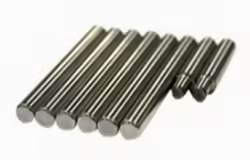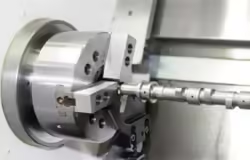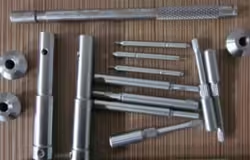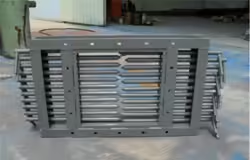
What Is Billet Steel? 4 Undeniable Advantages
Table of Contents
Introduction

In the world of metallurgy and manufacturing, the term “what is billet steel” often emerges during discussions about raw materials and high-strength components. Billet steel is a semi-finished solid form of steel used in the forging, rolling, and extrusion processes. These billets serve as the starting point for producing a wide range of finished steel products, such as bars, rods, and structural shapes.
Billet steel is typically produced either through continuous casting or hot rolling processes. Its composition and structure make it suitable for further mechanical processing into parts for automotive, construction, machinery, and aerospace applications. Understanding what is billet steel offers valuable insights for manufacturers and engineers seeking strong and durable materials.
This article explores the characteristics, types, production methods, and the top four undeniable advantages of billet steel. Readers will also find a helpful comparison table and answers to common questions related to this versatile material.
What Is Billet Steel: Types and Production Methods
Understanding what is billet steel starts with recognizing the foundation of many manufacturing and construction processes. Billet steel, often referred to as the raw form of processed steel, is a semi-finished steel product with a square or rectangular cross-section. This foundational material is essential for creating various steel components due to its excellent mechanical properties and consistency.
Steel Billet Types
When exploring what is billet steel, it’s important to understand that there are primarily two main types used across industries:
1. Continuous Cast Billets: These billets are produced directly from molten steel using a continuous casting machine. This method allows for high productivity and uniform composition, making it the most widely used form in modern steel manufacturing.
2. Rolled Billets: These are created by hot rolling steel blooms or ingots into smaller, more manageable shapes. Rolled billets are often used where specific dimensional accuracy and surface finish are critical.
Both forms play a vital role in answering the question: what is billet steel and how is it applied in real-world scenarios? From engine components to reinforcement bars, these billets serve as the building blocks for a multitude of products.
Production Process
The manufacturing process generally involves:
Understanding the production method further clarifies what is billet steel. The typical process includes:
- Melting: Steel production begins by melting raw materials, such as iron ore, scrap steel, and alloying elements, in a high-temperature furnace.
- Refining: The molten steel is refined to achieve desired chemical specifications. This step ensures the removal of impurities and adjustments in carbon, manganese, and other key elements.
- Casting: The purified molten steel is then cast into molds or fed continuously into a casting machine to form billets.
- Cooling and Cutting: Once solidified, the billets are cooled under controlled conditions and cut into specific lengths based on application needs.
This systematic production ensures that billet steel meets stringent mechanical and dimensional criteria. The ability to tailor these parameters is one reason why industries prioritize billet steel over alternative materials.
Common Applications of Billet Steel
When asking what is billet steel used for, consider the following industries and components:
- Automotive: Crankshafts, axles, and suspension parts
- Aerospace: Structural components and landing gear parts
- Construction: Rebars, beams, and fasteners
- Tool Manufacturing: Drills, dies, and hand tools
The precise control over billet steel’s composition and dimensions gives it a significant edge in high-performance and safety-critical applications.
Top 4 Undeniable Advantages of Billet Steel

1. Superior Strength and Durability
One of the main answers to what is billet steel and why it’s valued lies in its unmatched strength. Billet steel offers excellent tensile strength and outstanding resistance to impact. This is due to its refined grain structure and minimal impurity content, which allow it to maintain integrity under high stress. These characteristics make billet steel the top choice for demanding applications where safety and endurance are non-negotiable.
2. Excellent Machinability and Formability
Another vital aspect of understanding what is billet steel involves its workability. The uniform internal structure of billet steel makes it easy to machine and form into specific shapes. Whether manufacturers are producing intricate automotive components or large industrial tools, billet steel’s consistent texture ensures precision and ease of processing.
3. High Versatility Across Industries
When discussing what is billet steel in the context of utility, its versatility stands out. From automotive parts to building reinforcements, billet steel adapts to a broad spectrum of fabrication methods such as forging, extrusion, and CNC machining. Its compatibility with a variety of industrial processes ensures that it remains a preferred raw material across sectors.
4. Reliable Quality and Consistency
What is billet steel without quality assurance? Today’s steel manufacturers implement strict quality control procedures to guarantee consistent mechanical and chemical attributes in each billet batch. This consistency minimizes risks in downstream processing and allows end-users to predict material behavior accurately, thereby improving operational reliability.
Key Comparisons: Billet Steel vs Other Steel Forms
Below is a table comparing billet steel with other common steel forms like bloom and slab steel:
| Property | Billet Steel | Bloom Steel | Slab Steel |
|---|---|---|---|
| Typical Dimensions | Smaller (up to 125mm) | Larger (over 150mm) | Wide and Flat |
| Primary Usage | Bars, Rods, Shafts | Rails, Structural Beams | Sheets, Coils, Plates |
| Strength and Machinability | High | Moderate | Lower |
| Processing Method | Casting or Rolling | Rolling from Ingots | Continuous Casting |
| Common Applications | Automotive, Tools | Bridges, Railroads | Appliances, Vehicles |
This comparison emphasizes why understanding what is billet steel is crucial for selecting the right raw material in different industries.
Applications That Benefit Most from Billet Steel

Understanding what is billet steel and how it performs helps clarify why it’s a top choice across various industries. Billet steel’s unique combination of strength, consistency, and workability makes it suitable for a wide range of high-demand applications where performance and reliability are critical.
- Automotive Industry: One of the primary sectors that benefits from billet steel is the automotive industry. Its superior tensile strength and fatigue resistance make it ideal for manufacturing high-stress engine components such as crankshafts, camshafts, connecting rods, and suspension arms. Because what is billet steel centers on purity and structural uniformity, automakers rely on it for both safety and efficiency in modern vehicle design.
- Construction Sector: In the construction field, billet steel serves as the backbone for various essential structures. It is commonly processed into reinforcement bars (rebar), beams, and support columns. Builders choose billet steel because of its structural integrity and reliable performance under load. If you’re asking what is billet steel used for in construction, the answer is almost always tied to foundational strength and long-term durability.
- Machinery Manufacturing: From factory automation to heavy equipment, machinery parts require materials that can withstand constant motion and mechanical stress. Billet steel is ideal for gears, shafts, fasteners, and mechanical arms thanks to its precise chemical composition and high tolerance to pressure. Knowing what is billet steel can explain why so many industrial machines are built with it—it’s engineered for resilience and endurance.
- Aerospace Industry: The aerospace sector operates under extreme technical and safety standards. Because of this, billet steel is frequently used in landing gear components, actuators, and structural frames. Its predictable performance and resistance to fatigue make it a reliable material in aerospace applications where even minor failure is unacceptable. When engineers evaluate what is billet steel, they often find it meets or exceeds the mechanical property requirements for aerospace-grade parts.
The reason for its widespread use lies in its blend of strength, adaptability, and precision engineering potential.
Conclusion
Recognizing what is billet steel is not just about understanding a material—it’s about appreciating its pivotal role in modern engineering. With unmatched strength, high machinability, and broad industrial applicability, billet steel remains one of the most important building blocks of today’s infrastructure and innovation.
From production to performance, every aspect of billet steel supports durability and dependability. Engineers, procurement managers, and manufacturers benefit from knowing its capabilities and selecting the right billet for their unique needs.
As industries demand ever-higher standards, billet steel continues to evolve with advanced production methods and tighter quality standards, ensuring it stays relevant for the most demanding applications.
FAQ
What is billet steel made of?
Billet steel is typically made from carbon steel or alloy steel, depending on its intended use. The composition is carefully controlled to ensure desired mechanical properties.
Is billet steel stronger than regular steel?
Yes, billet steel often has superior mechanical strength due to its refined production and minimal impurities, making it suitable for heavy-duty applications.
How is billet steel different from forged steel?
Billet steel refers to the raw shape, while forged steel refers to the process. A billet can be forged into a finished part, gaining additional strength through the forging process.
Can billet steel be customized?
Yes. Billet steel can be tailored in terms of chemical composition, size, and length to meet specific project requirements, especially in specialized industries.
Why is billet steel preferred in precision industries?
Because of its uniform structure, billet steel is easier to machine and form accurately, which is critical in applications that demand high precision and performance.






